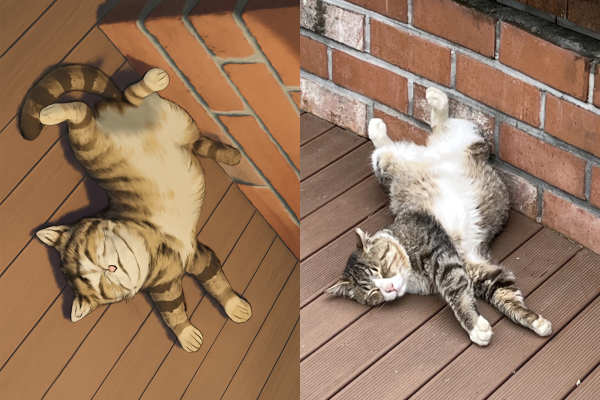
“Turn my photo into Ghibli style.”
With a simple prompt, the “Ghibli style” function has quickly become a widely shared trend across social media. Among the new image generation features introduced by OpenAI’s latest model, GPT-4o, the so-called “Ghibli style” has become a cultural phenomenon. By simply entering a prompt, anyone can generate images rendered in the signature look of a renowned animation studio. As a result, social media platforms are now flooded with users showcasing their new “Ghibli profile pictures.”
This trend has gone beyond a passing faze, directly influencing the platform’s user metrics. As of March, ChatGPT surpassed 400 million weekly active users worldwide. In South Korea alone, the number of monthly active users reached 10.7 million in April, marking a 110% increase from the previous month. The number of new app installations also reached an all-time high.
At the heart of GPT-4o is its “omni-modal” architecture. This advanced system processes text, images, and audio inputs simultaneously, producing contextually coherent outputs. The model can recognize artistic styles from massive datasets of image-text pairs and replicate them by extracting patterns and features. With this structure, users can generate high-resolution Ghibli-style images using just a short prompt. Simply describe a scene, character, or emotion, and GPT-4o interprets it to produce warm and delicate illustrations reminiscent of Studio Ghibli’s visual aesthetic.
However, the explosive demand has not come without consequences. Image generation is a computationally intensive task, requiring thousands of matrix operations per request. Generating high-resolution images can result in hundreds of megabytes of data, placing enormous strain on GPU capacity, VRAM, and I/O processing. OpenAI CEO Sam Altman acknowledged the system strain, noting that “the GPT-4o image model is practically melting servers” due to the surge in usage. The company even temporarily restricted access to the feature as a result. The overwhelming popularity has now revealed the limitations of even the most advanced AI systems.
Meanwhile, the widespread use of Ghibli-style image generation has sparked broader debates about originality, imitation, and the identity of AI-generated art. Hayao Miyazaki, director and co-founder of Studio Ghibli, has long been critical of artificial intelligence in creative work. In a 2016 NHK documentary, he referred to AI-generated images as “an insult to life itself.” Studio Ghibli has yet to release an official statement regarding the recent trend. Still, given its commitment to traditional hand-drawn animation and craftsmanship, many speculate that the studio is unlikely to view the development favorably.
Legal concerns have also emerged. While artistic “styles” are not protected under copyright law, direct imitation of specific works or scenes can raise infringement issues. OpenAI, already involved in several copyright-related lawsuits, has implemented some prompt restrictions as a precaution.
The Ghibli-style boom illustrates how technology and creativity are converging in new and unprecedented ways. Yet the boundaries remain unclear. Is it imitation or creation? Appreciation or consumption? As traditional craftsmanship is translated into algorithmic patterns, questions about the future of art continue to emerge.


